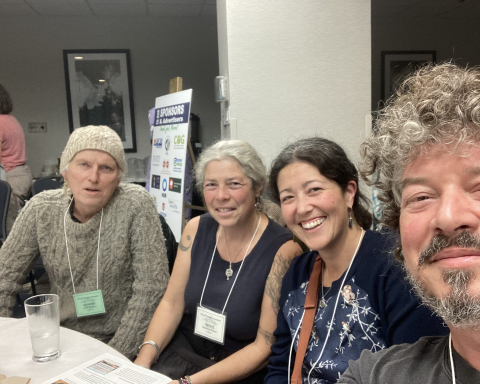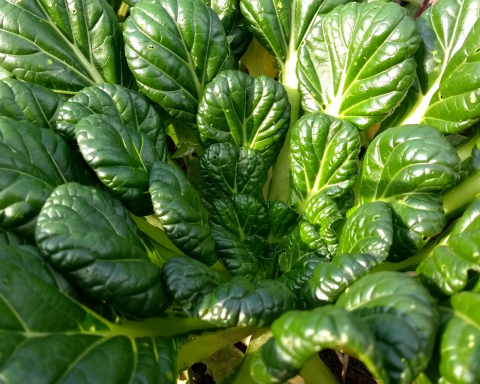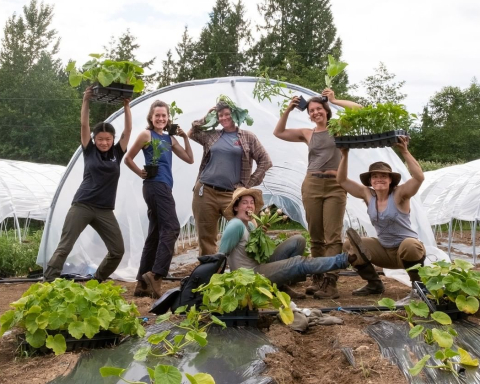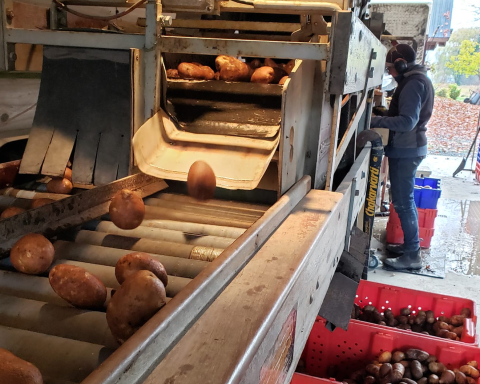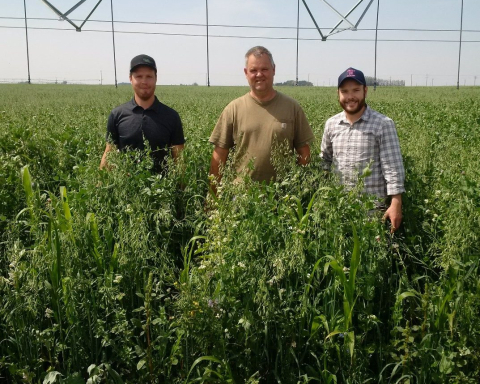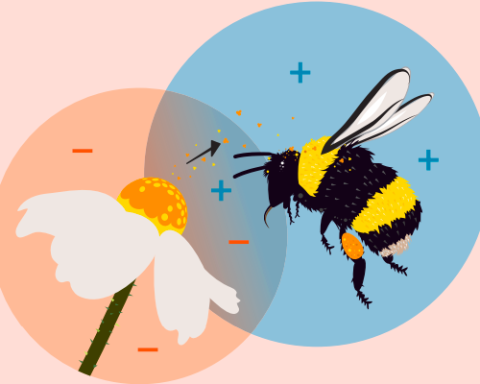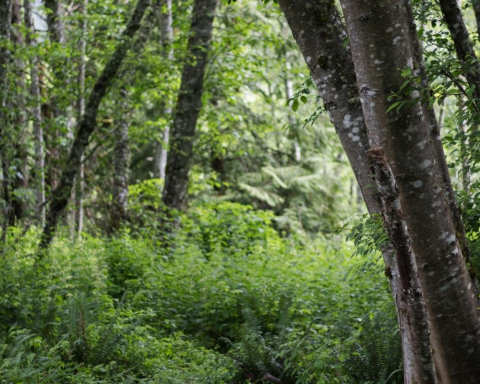The Relationship Between Religions, Agriculture, and Civilizations
Marjorie Harris
“The way we see the world shapes the way we treat it. If a mountain is a deity, not a pile of ore…if a forest is a sacred grove, not timber; if other species are biological kin, not resources; or if the planet is our mother, not an opportunity… then we will treat each other with greater respect. Thus is the challenge, to look at the world from a different perspective.” – David Suzuki
David Suzuki has provided a provocative consideration about how we perceive the world and how that impacts our treatment of the world and each other. Recently, I had the opportunity to interview Brian Snyder, a recently retired executive director of Ohio State University’s Initiative for Food and AgriCultural Transformation (InFACT) program, to discuss similar ideas about how agriculture impacts the world and ourselves.
Brian has 40 years of experience managing programs having to do with agriculture and food systems, with a business degree from the University of Massachusetts Amherst and a theological degree from Harvard. He is just the expert to expand an understanding on the cause and effect of our world perceptions and the results we are harvesting.
Brian has been observing agricultural systems and their underlying religious philosophies, and he has come to the startling conclusion that all religions emerged to explain and justify cultural systems that run contrary to natural systems, and seek to overcome natural systems. Religion is often a justification for things that are contrary to nature, rather than a set of principles to build one’s life upon—as we have been led to believe by consumerist belief systems embedded into the foundations of the world’s religious systems.
Reframing History
For the bulk of human history people have been hunter-gatherers subject to the cycles of nature, whether they be feast or famine. With the archeological discovery of the Gobekli Tepe, the entire understanding modern scholars had about the origin of agriculture in relationship to religion was flipped upside down. The Gobekli Tepe temple structures are located in the Cappadocia region of northern Turkey and have been dated to 15,000 years old. They are now identified as the world’s oldest and first temples. The Gobekli Tepe temple complex was built before the beginning of agriculture, as agriculture is thought to have been established about 10,000 years ago. No evidence of domestic grains or livestock are present at the Gobekli Tepe site, only wild animal bones.
Until Gobekli Tepe’s discovery, it was thought that religion had been developed in response to the rise of agriculture. That theory has now been challenged, with an alternative interpretation being that agriculture developed in response to a religious presence—the rise of agriculture is coincident with the rise of religion. As Brian explains, religions can function to justify the use of agriculture to grow human populations beyond the natural carrying capacity of the land. The intentional raising of crops through tillage in an organized way created an abundance of food, providing more than was needed for the population.
From a cultural standpoint, this was an inflection point: the abundance of food led people to take the false belief that they were in control; yet nature is still, and always will be, beyond human control with regard to climate and the geological and celestial movements that control the growing seasons.
Brian observes that there is some sort of inherent divine presence that looks after all these things in the world. As depicted in the Christian Garden of Eden creation story, humanity started in the garden where nature took care of itself and provided for the people. At the point where people started to grow gardens and livestock for themselves, they seized governance for themselves, from nature. This is recorded in Genesis as the Fall of Man—human beings taking control of this natural process, with the idea of growing the population beyond what the land could naturally support.
The Cain and Abel story is an explicit struggle between livestock and crops over famine, water quality, and food security. Humanity hasn’t moved beyond these basic struggles, which have existed since the beginning of agriculture. In other religions, reincarnation offers a way to survive current problems and come back, without ever questioning what there will be to come back to if there is extinction?
Losing Ourselves to “Feed the World”
Today’s agricultural rhetoric is that we have to feed the world. We must be ready to feed people who are not here yet, have not been born yet—under the industrial corporate agriculture system the population will continue to grow unabated. The result of this rhetoric will be a further reduction in ecosystem biodiversity and biodiversity of crop-types, through the direct corporate control and ownership over the genetic materials for seeds and livestock.
Here is the challenge for humanity. It is both spiritual and scientific. What was divine was biodiversity propagating itself and creating ecosystem abundance in response to the natural environments. The population has grown beyond the carrying capacity of the earth already and reduction of species has been dramatic in recent decades. These events are playing out in the final Fall of Man—in the Christian mythos, as humankind’s punishment the ground will produce only thistles and weeds.
The sixth extinction is on the horizon.
There is controversy around humanity’s immense control over the quantity of food varieties, which have been radically reduced in number. In Pre-Columbian times in Peru there were over 3,000 varieties of potatoes growing in unique ecosystems. The Indigenous peoples would have considered each variety of potato to be a completely different type of crop. Over the past 500 years, with selective breeding programs and the spread of the potato worldwide, the global food system now depends on less than 30 varieties. Reliance on just three varieties of potato helped to precipitate the great Irish potato famine of the mid 19th century. Our ever-increasing dependence on soybeans and corn with reduced genetic diversity places humankind on the brink of the most tragic circumstance—that is, a worldwide catastrophe.
The organic agriculture ideal is to take spent land and regenerate it, to create sustainable agriculture systems. This highlights one of the challenges we face, the challenge of changing how we see the world.
Food companies are designed to maximize resources and monetary returns, rather than the methods used to regenerate the land and diversity of species. Corporate interests funnel genetics into a reduced sphere of diversity. Industrial farming with artificial commercially-produced inputs is all about farming as a necessity to continue to expand the population. From the Brazilian Amazon rainforest to the northern Boreal forests of Canada, generally accepted farming methods are to cut and burn the forest for land, strip the soils of nutrients by cropping, and then moving on to cut and burn more forests for more crop land.
At this point, there is no meaningful pushback from end consumers and farmers. The vast majority of people do not feel a strong inclination to turn the system around. Humans continue to consume unabated without concern. The consumer rhetoric is for the population to grow.
Expanding Our Approach
Hunters and gatherers were adapted to what nature provides. What was the trigger that catapulted humans into religion and agriculture? Perhaps there were evolutionary stressors that led humans to think that they could move beyond dependence on natural systems.
Genesis speaks of the knowledge of Good and Evil, where human beings think that they understand how things work, and then turn things to around to what they think most benefits humans. Bending nature to produce more than it naturally would, and then worshipping the human capacity to overcome natural processes.
Once you have the ears to hear the reductionist approach, it echoes in every news cycle. People are concerned about financial inflation first, then climate change and food security as afterthoughts. A shift is required in the way we see the world and each other. The solution is both spiritual and scientific.
“Thus is the challenge, to look at the world from a different perspective.” – David Suzuki
Marjorie Harris, IOIA VO and concerned organophyte.
Feature image: Göbekli Tepe detail. Credit: (CC) Davide Mauro.



